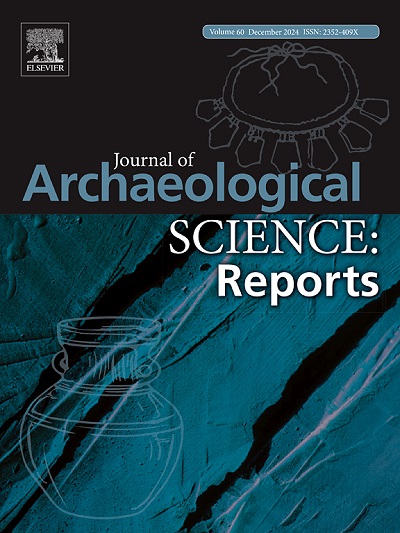两个古玛雅纹身工具,来自伯利兹咆哮溪谷的Actun Uayazba Kab
IF 1.5
2区 历史学
0 ARCHAEOLOGY
引用次数: 0
摘要
我们所知道的古代玛雅人纹身是出于重要的社会和仪式原因,这主要是基于民族历史记载和经典玛雅图像。值得注意的是,他们使用的纹身工具在考古记录中没有被发现。根据工具形式、使用磨损和残留物,从伯利兹Actun Uayazba Kab(手印洞)上部岩架(岩架1)的石灰华池中回收的两块经过修复的燧石燃烧碎片被解释为用于此目的的石器制品。从洞穴中发现的这些工具引发了人们对古典时期(公元250-900年)古玛雅纹身的仪式性质和背景的质疑。本文章由计算机程序翻译,如有差异,请以英文原文为准。
Two ancient Maya tattooing tools from Actun Uayazba Kab, Roaring Creek Valley, Belize
Our knowledge that the ancient Maya tattooed themselves for significant social and ceremonial reasons is primarily based on ethnohistoric accounts and Classic Maya imagery. Notably, the tattooing implements they used have gone undetected in the archaeological record. Based on tool form, use-wear, and residues, two retouched chert burin spalls recovered from travertine pools on an upper ledge (Ledge 1) of Actun Uayazba Kab (Handprint Cave), Belize, are interpreted as lithic artifacts used for this purpose. The recovery of these implements from a cave raises questions about the ritual nature and context of ancient Maya tattooing in the Classic period (AD 250–900).
求助全文
通过发布文献求助,成功后即可免费获取论文全文。
去求助
来源期刊

Journal of Archaeological Science-Reports
ARCHAEOLOGY-
CiteScore
3.10
自引率
12.50%
发文量
405
期刊介绍:
Journal of Archaeological Science: Reports is aimed at archaeologists and scientists engaged with the application of scientific techniques and methodologies to all areas of archaeology. The journal focuses on the results of the application of scientific methods to archaeological problems and debates. It will provide a forum for reviews and scientific debate of issues in scientific archaeology and their impact in the wider subject. Journal of Archaeological Science: Reports will publish papers of excellent archaeological science, with regional or wider interest. This will include case studies, reviews and short papers where an established scientific technique sheds light on archaeological questions and debates.
 求助内容:
求助内容: 应助结果提醒方式:
应助结果提醒方式:


